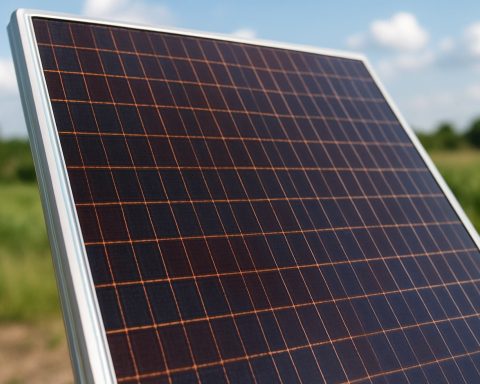- The GWM Tank 500 PHEV is set to shake up the large SUV segment with its advanced powertrain.
- Featuring the dual e-motor Hi4-Z system, it delivers 635kW of power and 1139Nm of torque, achieving 0-100 km/h in 4.6 seconds.
- Its substantial electric range of 201 kilometers supports zero-emission urban travel.
- The Tank 500 PHEV boasts robust off-road capabilities, including low-range gearing and front and rear locking differentials.
- Consumers can choose between two PHEV systems: the urban-oriented Hi4-Z and the off-road-focused Hi4-T.
- GWM plans to launch eight new or updated models in Australia by late 2025, aiming for significant market presence.
- The model underscores GWM’s commitment to combining excitement with environmental responsibility.
Beneath its rugged exterior and imposing stance, GWM’s ambitious new Tank 500 Plug-in Hybrid Electric Vehicle (PHEV) harbors a secret weapon that threatens to upend the balance in the large SUV segment. As it prepares for its imminent Australian debut, the Tank 500 PHEV brings with it a powertrain that promises to leave its competitors in the dust.
Picture this: a hulking SUV that doesn’t just wade into the off-road battlefield but charges in with the prowess akin to a prowling panther. At its core, the Tank 500 PHEV boasts the revolutionary dual e-motor Hi4-Z system, seeking to redefine what consumers expect from family SUVs. With an exhilarating output of 635kW and spine-tingling torque of 1139Nm, this formidable beast accelerates from 0 to 100 km/h in a breathtaking 4.6 seconds. It’s an audacious claim that may send shivers down the chassis of rivals like the Ford Everest, Toyota Prado, and even the mighty Ford Ranger Raptor.
What sets the Tank 500 PHEV apart is its generous electric range—201 kilometers of zero-emission travel—offering urban dwellers the luxury of navigating cityscapes with the quiet hum of electric power. For the adventurers and weekend warriors, this range blends seamlessly with off-road capabilities that have become synonymous with the Tank brand: low-range gearing, front and rear locking differentials, and a unique ‘tank turn’ feature.
And then there’s the choice—a tantalizing dance between two PHEV systems: the urban-savvy Hi4-Z and the rugged Hi4-T. The latter, debuting in the Cannon Alpha ute in Australia, whispers promises of superior off-road performance, harnessing a turbo-petrol engine with the e-motor’s added muscle.
GWM’s strategic pacing hints at a thoughtful approach to market entry, where consumer needs are considered with the meticulousness of a chess grandmaster planning several moves ahead. By late 2025, the Tank 500 PHEV will be one of eight new or updated steeds galloping into Australian showrooms. With ambitions to conquer 50,000 local sales and clinch a coveted spot within the nation’s top ten automakers, GWM’s gaze is firmly set on the horizon.
The key takeaway from GWM’s Tank 500 PHEV announcement is a message to competitors and consumers alike: that excitement and environmental responsibility are not mutually exclusive. As the Tank 500 PHEV rolls into the market, it bears with it an opportunity for drivers to indulge in power, embrace innovation, and redefine their automotive experiences. In this new era of electrification and performance, GWM boldly invites the world to consider—what truly drives you?
Can the GWM Tank 500 PHEV Outshine the Competition?
Introduction
The GWM Tank 500 Plug-in Hybrid Electric Vehicle (PHEV) is set to make waves in the SUV market, combining off-road prowess with sustainable technology. As anticipation builds for its Australian launch, let’s delve deeper into the features, performance, and market dynamics that set this vehicle apart from its competitors.
Key Features and Specifications
– Powertrain and Performance: At the heart of the Tank 500 PHEV is the innovative dual e-motor Hi4-Z system, offering an impressive 635 kW and 1139 Nm of torque. This SUV can accelerate from 0 to 100 km/h in just 4.6 seconds, showcasing its sports car-like performance in an SUV form.
– Electric Range: The standout feature is its electric-only range of 201 kilometers. This substantial range makes it practical for daily commutes and weekend getaways, offering an eco-friendly alternative for urban explorers.
– Off-road Capabilities: True to the Tank brand, the 500 PHEV is engineered for off-road adventures. Features like low-range gearing, front and rear locking differentials, and an exclusive ‘tank turn’ mode ensure it can tackle diverse terrains with ease.
– PHEV Systems: Buyers have the option between two tailor-made PHEV systems: the Hi4-Z for urban efficiency and the Hi4-T for enhanced off-road performance, making it versatile for different driving preferences.
Comparison with Competitors
While SUVs like the Ford Everest and Toyota Prado are popular choices, the Tank 500 PHEV stands out with its unique blend of powerful hybrid technology and extensive electric range. According to a recent market analysis by CarSales, the GWM Tank 500 PHEV’s power and efficiency may outshine these models, especially in categories involving acceleration and ecological impact.
Market Forecasts and Trends
The Australian auto market is witnessing significant growth in the PHEV segment. According to Mordor Intelligence, the demand for hybrid vehicles is set to increase by over 20% in the next five years. GWM aims to leverage this trend, aspiring to significant market penetration and brand establishment by 2025, aligning with a broader industry shift towards sustainability.
Reviews and Expert Opinions
Experts have praised the Tank 500 PHEV for its innovation in powertrain technology, with motor journalists noting the vehicle’s balanced approach to performance and efficiency. The comprehensive electric range has been highlighted as a class-leading feature, suited for eco-conscious buyers without compromising on performance.
Potential Limitations and Considerations
– Price Point: While pricing hasn’t been officially announced, speculation suggests the Tank 500 PHEV might command a premium over conventional SUVs due to its advanced technology. This could potentially limit its initial adoption to more affluent consumers.
– Infrastructure Needs: A robust charging infrastructure is vital to maximize the benefits of PHEVs. Investment in EV infrastructure is necessary to support the promised electric range, especially in non-urban areas.
Actionable Recommendations
– Test Drive: Potential buyers should test drive the Tank 500 PHEV to experience its unique combination of power and sustainability firsthand.
– Infrastructure Check: Consider your local options for EV charging stations to fully utilize the PHEV’s electric range.
– Stay Informed: Keep an eye on GWM’s official website for updates on pricing and availability, and watch for announcements from local dealerships.
Conclusion
The GWM Tank 500 PHEV represents a significant advancement in the SUV segment, marrying formidable performance with eco-friendly technology. It’s an exciting proposition for those seeking a capable, green vehicle without sacrificing power. By understanding your driving needs and infrastructure access, you can make an informed decision on whether this innovative SUV is the right choice for you.












